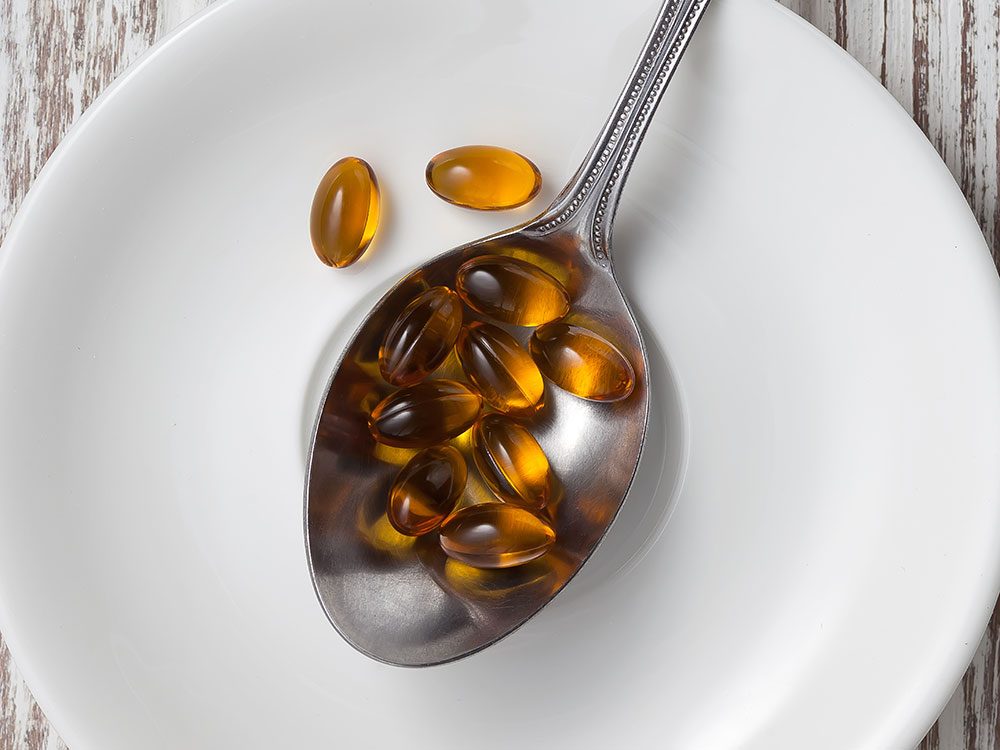
1. Saw Palmetto
What is it?
The saw palmetto, a small palm tree that grows wild from Texas to South Carolina in the U.S., gets its name from the spiny saw-toothed stems that lie at the base of each leaf. Its medicinal properties are derived from its blue-black berries. Native Americans regularly consumed saw palmetto as food and used it as a tonic. Long a favourite in Europe, saw palmetto is now one of the 10 best-selling supplements in the U.S. as well.
What does it do?
Saw palmetto has a long history of folk use, was historically used to treat urinary tract disorders, and was given to frail individuals as a general tonic. Over the years, it has also been employed to relieve persistent coughs and improve digestion. Today, saw palmetto’s main claim to fame is its ability to relieve the symptoms of an enlarged prostate gland—a use verified by many reputable scientific studies.
What are the major benefits?
Doctors routinely prescribe saw palmetto for the benign enlargement of the prostate gland known medically as BPH: “benign prostatic hyperplasia” or “benign prostatic hypertrophy.” When the walnut-sized prostate gland becomes enlarged (a condition that affects men over 50 years of age), it can press on the urethra, the tube that carries urine from the bladder through the prostate and out the penis. Resulting symptoms include frequent and painful urination, weak urine flow, and difficulty emptying the bladder completely.
Researchers believe that saw palmetto relieves the symptoms of BPH in various ways. It also appears to alter levels of various hormones that cause prostate cells to multiply, and may curb inflammation and reduce tissue swelling. Studies have also found that saw palmetto produces fewer side effects (such as impotence) and quicker results than the conventional prostate drugs. However, its long-term safety and effectiveness are not yet known.
What are the additional benefits?
Saw palmetto may help ease the symptoms of chronic prostatitis (inflammation of the prostate gland) and chronic pelvic pain, although research has produced mixed findings. It may help around half of men with alopecia. Traditionally, it is used to treat impotence and infertility in men and is thought to be an aphrodisiac.
In an international study of 1,000 men with moderate BPH, two-thirds benefited from taking either a prescription prostate drug or saw palmetto for six months. Those using the herb had fewer problems with side effects. However, the conventional medication significantly reduced the size of the prostate whereas the effect of saw palmetto was much less dramatic, particularly in men who had very large prostates. The study authors concluded that the herb may be most appropriate when the gland is only slightly or moderately enlarged.
A study of 811 men with BPH compared the 5-alpha-reductase inhibitor tamsulosin with saw palmetto. The researchers found the conventional drug and the herb equally effective, with the drug more likely to cause ejaculation disorders. Additionally, a small three-month study comparing saw palmetto with the alpha-agonist prazosin found both reduced symptoms, although prazosin was slightly more effective.
How do I take it?
Choose saw palmetto supplements made from extracts standardized to contain 85 to 95 per cent fatty acids and sterols—the active ingredients in the berries that are responsible for the herb’s therapeutic effects. Be careful if you’re thinking about taking higher amounts. Scientific studies have not examined the effects of high doses.
If you’re using the dried berry, aim for 2 to 4 grams a day. If you’re using a liquid extract (1:2) go for 2 to 4.5 millilitres a day. For liposterolic extract take 320 milligrams a day divided into two doses. For other preparations follow the manufacturer’s instructions or consult your health-care practitioner.
It may be one to two months before you see the benefits of saw palmetto. Because saw palmetto has a bitter taste, those using liquid forms may want to dilute the extract in a small amount of water. The herb can be taken with or without food, although taking it with breakfast or dinner will minimize the risk of stomach upset.
Although some health-care practitioners recommend sipping a tea made from saw palmetto, such a brew may not contain therapeutic amounts of the active ingredients and may not provide any real benefits for the treatment of BPH.
Read the label carefully when buying a “men’s formula.” Although most contain saw palmetto, they usually also include a number of other herbs or nutrients and some of these may not be right for you. In addition, the amount of saw palmetto in these products may be too small to be of any use.

2. Pygeum
What is it?
The Pygeum africanum extract tree is a tall evergreen of the family Rosaceae found in central and southern Africa. Its bark has been used medicinally for thousands of years and was used to relieve urinary disorders. The African plum tree has become endangered because of the demand for its bark to process P. africanum extract.
Pygeum has been used in Africa for many generations to treat the symptoms of benign prostatic hyperplasia or benign prostatic hypertrophy (BPH), a condition often affecting older men where the prostate enlarges and interferes with urination. Only recently have medical and other health-care practitioners in the West caught up to their African counterparts. Healers in Africa have been using the bark of P. africanum for many generations to treat bladder and urination disorders consistent with an enlarged prostate (BPH).
The Zulu have used the bark of P. africanum extract to treat a variety of health conditions, including inflammation, kidney disease, urinary problems, malaria, stomachache, fever, difficulty urinating and inflammation. It is also used as an aphrodisiac. Since the 1960s, P. africanum extract has been used in Western clinical practice.
What does it do?
Pygeum has been observed to improve urinary symptoms associated with enlargement of the prostate gland or prostate inflammation. It is thought that the pentacyclic triterpenoids present in pygeum help rid the body of substances that bind to prostate walls and thereby maintain sound prostate and reproductive system health.
What are the major benefits?
A lipophilic extract of the bark of Pygeum africanum is used in the treatment of a mildly to moderately enlarged prostate (BPH). Numerous studies have suggested the effectiveness of P. africanum extract in improving symptoms of BPH, including an overall symptom rating called the International Prostate Symptom Score, quality of life, residual urine volume, urine flow rate, urinary hesitancy or frequency, pain associated with urination and frequency of nocturia (nighttime urination) in men with mild to moderate symptoms. The majority of trials conducted since the 1970s show improvement in BPH symptoms, including frequency of nocturia, urine flow rate and residual urine volume, with the administration of P. africanum extract.
Although pygeum improves bothersome symptoms associated with prostate enlargement or irritation, it does not seem to reverse the condition or prevent the prostate from getting larger over time. It’s unclear whether pygeum is more effective or better tolerated than other common medical therapies, including surgery. Scientists are conducting ongoing clinical trials comparing the effects of pygeum with conventional medical therapies for BPH.
What are the additional benefits?
Although effectiveness is unproven, pygeum is sometimes used as an aphrodisiac and as an aid to sexual performance. It has also been used to treat fever, impotence, inflammation, kidney disease, malaria, male baldness, psychosis and stomach upset, although effectiveness in these areas is also unproven. Small, flawed trials suggest it may help with infections of the prostate (prostatitis) or seminal vesicles and with sexual dysfunction.
How do I take it?
There are no standard or well-studied doses of pygeum and many different doses are used traditionally, so follow the manufacturer’s instructions or consult your health-care practitioner. Safety of use beyond 12 months has not been studied.
Pygeum caused few problems in studies and is generally well tolerated in doses of 100 to 200 milligrams a day. Some people may experience stomach discomfort, including diarrhea, constipation, stomach pain or nausea. Stomach upset is usually mild and does not typically cause people to stop using pygeum.
People with known allergies to pygeum should avoid this herb. Signs of allergy include rash, redness, itching, swelling, wheeze, shortness of breath and difficulty breathing. Always have symptoms of prostate problems checked by a doctor.
Always have urinary problems or symptoms of prostate problems checked by a doctor before beginning treatment with pygeum. If your symptoms are getting worse or if new symptoms appear, see your doctor again.
Taking pygeum with other drugs commonly used to treat symptoms of prostate enlargement, such as terazosin or finasteride, may increase its beneficial effects. Pygeum be most helpful for prostate problems if used with the herbs saw palmetto or stinging nettle.

3. Red Clover
What is it?
Red clover thrives in a wide range of different climates and can be found growing wild in grassy areas of many continents; its flowers are used medicinally.
What does it do?
The flowers and leaves of red clover contain phytoestrogens, natural plant chemicals that mimic the effects of the human hormone oestrogen. The most useful phytoestrogens are the isoflavones, such as genistein, and red clover is rich in these compounds. Red clover extracts can be standardized to contain 15 percent isoflavones.
Animal studies reveal that red clover isoflavones help protect DNA from damage, prevent cell proliferation and stop new blood vessels (potentially supplying tumours with nutrients) from forming, all activities that may have cancer-fighting effects. They also help cells form particular chemicals that may reduce the risk of cancerous changes. Red clover has been used for centuries to treat skin ulcers of all kinds and other skin diseases and nagging coughs.
A United Kingdom study showed red clover prevented bone loss. However, more work needs to be done to determine if it is an effective preventive for osteoporosis (where the bones are weakened by calcium loss and fractures occur easily), a common problem for older men. Several small studies have looked at whether red clover can prevent or treat osteoporosis. One found that bone density did improve; another found no improvements but did find that there was no further loss during the year-long trial. Consequently, there is not enough information to draw firm conclusions.
What are the major benefits?
Small studies have shown that red clover isoflavones did have beneficial effects on the stiffness of the arteries that carry blood from the heart to the body and on the function of the endothelium, which lines the arteries. One study showed it reduced blood pressure while another found no effect. Red clover may reduce cholesterol levels but, again, researchers have produced conflicting results.
What are the additional benefits?
Phytoestrogens such as red clover may reduce the risk of cancer, including prostate cancer. Despite promising laboratory results, small human studies have not shown clinical benefits. It is used to treat benign enlargement of the prostate (called benign prostatic hyperplasia or hypertrophy, or BPH). Traditional uses include as a mild antispasmodic for the relief of gastrointestinal symptoms, as an expectorant and treatment for chronic skin conditions, particularly eczema and psoriasis (often in combination with the herb yellow dock). Fresh red clover flowers can be chopped or mashed and applied directly to skin wounds such as insect bites. In animal studies, topical red clover preparations protected the skin against sun damage.
How do I take it?
For a liquid extract (1:1) in 25 percent alcohol: take 1.5 to 3.0 millilitres a day. Infusion or red clover extract: take 4 grams of red clover a day made into an infusion (tea) or as an extract in capsules or tablets. For concentrated isoflavone extract: take enough extract to provide 40 to 90 milligrams of isoflavones a day. Only mild side effects have been reported, including headache, muscle aches, nausea and rash.
If you have a hormone-dependent condition (such as prostate cancer), consult your doctor before taking red clover. Potentially, red clover may increase the effects of blood thinners such as warfarin and antiplatelet drugs such as aspirin; caution is advised. Before surgery, consult your surgeon about whether it is safe to continue taking red clover.